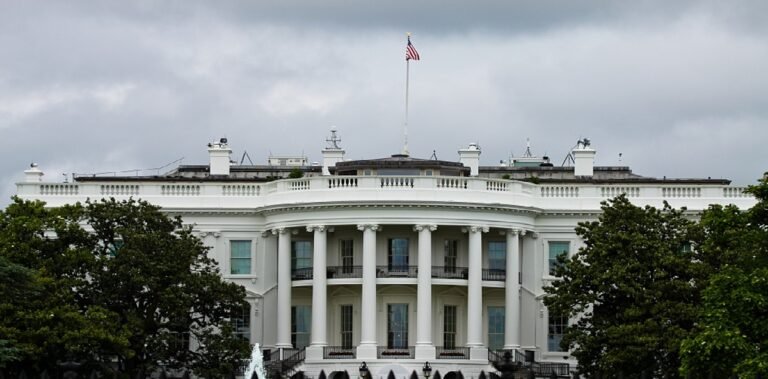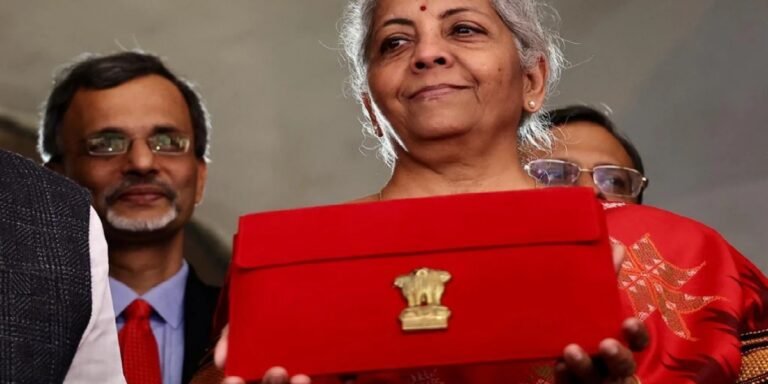
"Trump's Bold Tariff Move on India: 26% or 27%?"
Trump’s Bold Tariff plan is making headlines once more. Former President Donald Trump is back in the trade spotlight, and this time, Trump’s Bold Tariff strategy targets India—but the exact rate is unclear. Is it 26% or 27%? While one percent may seem small, in global trade, Trump’s Bold Tariff could shift millions in costs and reshape market dynamics. The uncertainty has businesses and analysts scrambling for clarity.
Let’s break it down.
Background on US-India Trade Relations
Trump’s Bold Tariff policy is shaking up the longstanding trade relationship between the US and India. While the two nations have been partners for decades, let’s be honest—it’s never been all sunshine and roses. From disputes over data localization to export subsidies, friction has been brewing, and now Trump’s Bold Tariff approach adds another layer of tension. With this latest move, Trump’s Bold Tariff strategy could redefine the economic dynamics between these global powers. The question is: at what cost?
Why Tariffs Matter in Global Trade
Trump’s Bold Tariff strategy reminds us that tariffs aren’t just tax percentages—they’re economic weapons with sharp political edges. When Trump’s Bold Tariff policy hikes rates, it’s rarely just about trade balances; it’s a calculated move to force negotiations or retaliate for larger grievances. India finds itself squarely in the crosshairs of Trump’s Bold Tariff approach yet again, proving no major trading partner is immune from this hardball tactics. The question now isn’t whether New Delhi will respond, but how forcefully—and what new front in this trade war might open next.
The New Trump’s Bold Tariff : 26% or 27%?
Here’s where the drama kicks in.
Where the Confusion Started
Some media outlets are shouting 27%, others say 26%. With no official PDF floating around and conflicting soundbites, people are left guessing. Is this a typo? A misquote? Or something more strategic?
Official Statements vs. Media Reports
The Trump team hinted at a “modest increase,” but didn’t say exact numbers initially. Meanwhile, news headlines ran wild with 27%. Then came a clarification—or was it?—mentioning 26%. Mixed signals much?
The Trump Administration’s Stance

The Trump administration adopted an aggressive trade policy, prioritizing “America First” through tariffs and renegotiated deals. It viewed trade deficits as economic losses, imposing steep duties on imports, particularly from China. The administration believed strong protectionist measures would revive U.S. manufacturing and force fairer trade terms. Critics argued these policies sparked costly trade wars and disrupted global supply chains. Ultimately, the approach reshaped trade dynamics, leaving a lasting impact on international commerce.
Trump’s Trade Philosophy
“Whether admired or criticized, Trump’s ‘America First’ philosophy had a major impact on U.S. trade policy.” If a partner was seen as unfair, boom—tariff. His team aimed to balance trade deficits, particularly with nations like China and India.
Previous Tariff Decisions on India
Remember the GSP status withdrawal in 2019? Yeah, that hit hard. That move alone affected nearly $5.6 billion worth of Indian exports.
Strategic Goals Behind the Move
This isn’t just about economics. Trump’s tariff moves are also about showing strength. With elections looming, flexing trade muscles plays well with certain voter bases.
Breaking Down the Tariff Details
What Products Are Affected?
Reports suggest the new tariff targets specific sectors like:
- Auto parts
- Pharmaceuticals
- Steel products
- Consumer electronics
Nothing random here. These are sectors where India is globally competitive.
Is It 26% or 27%? What We Know
Reports on the proposed tariff rate have varied slightly, with some sources citing 26% and others 27%, creating confusion. Government officials have yet to clarify the exact figure, leaving businesses uncertain about potential cost impacts. Analysts suggest the discrepancy could stem from different product categories or phased implementation plans. Until an official announcement is made, speculation will continue to influence market reactions. Stakeholders are advised to monitor updates closely to prepare for the final decision.
According to the most recent update, the tariff adjustment seems to settle at 26%, not 27%. Some reports rounded it up, but official documents now reflect 26%.
The Math Behind Tariff Percentages
Let’s get geeky. A 1% difference in tariffs on $1 billion worth of goods? That’s $10 million. And guess who pays? Either the importer, the exporter—or ultimately, you, the consumer.
Economic Impact on India
The recent tariff adjustment by the U.S. under Trump’s administration poses significant economic challenges for India. Increased tariffs can reduce export competitiveness, especially in key sectors like textiles, pharmaceuticals, and technology. This shift may lead to trade imbalances and a slowdown in bilateral commerce. India might need to explore new trade alliances or revise existing policies to adapt.
Indian Exporters’ Perspective
For Indian exporters, this is more than a headline—it’s a cost. Many operate on slim margins, and a sudden 26% tariff throws off pricing, profitability, and even international contracts.
Sector-wise Breakdown: Auto, Pharma, Textiles
- Auto: Price-sensitive market. Even a small increase can tank competitiveness.
- Pharma: Regulatory burden already high. Add tariffs? Ouch.
- Textiles: One of India’s biggest export earners—hit hard again.
India’s Possible Countermeasures
India isn’t sitting quietly. Counter-tariffs, trade talks, and appeals through the WTO could all be on the table.
Reactions Across the Globe
How Global Markets Are Responding
Trump’s Bold Tariff announcement sent shockwaves through markets that thrive on stability. The reaction was immediate: stocks of Indian exporters dipped sharply, while U.S. importers scrambled to find alternatives – all consequences of Trump’s Bold Tariff approach. Market analysts warn this volatility may just be the beginning, as Trump’s Bold Tariff strategy continues to rewrite global trade rules in real-time, leaving businesses racing to adapt.
Trump’s Bold Tariff is reshaping global trade patterns, with nations like Vietnam and Bangladesh monitoring the situation with keen interest. As Trump’s Bold Tariff makes Indian exports more expensive, these emerging economies stand ready to capture redirected business and claim their own slice of the international trade pie. Market analysts suggest Trump’s Bold Tariff could trigger a significant reallocation of global supply chains, potentially making Southeast Asia the biggest beneficiary of this trade policy shift. The coming months will reveal whether this becomes a temporary adjustment or a permanent realignment of export dominance.
Trump’s Bold Tariff strategy has sparked fierce debate, with critics divided on its true motives—some dismiss it as mere political posturing, while others see it as hardline protectionism. What remains undeniable is that Trump’s Bold Tariff approach has forced a reckoning in global trade relations. As analysts weigh in, most concur that the enduring consequences of Trump’s Bold Tariff will ultimately hinge on whether diplomacy or escalation guides the next moves from both Washington and its trading partners. The world watches as this high-stakes economic chess game unfolds.
Political and Diplomatic Fallout
Modi Government’s Response
India’s Ministry of Commerce has expressed “concern” but is waiting for full clarity. Behind closed doors, there’s likely a storm brewing.
Impact on Indo-US Diplomatic Ties
This could strain relations, but both sides know the stakes. Expect backroom negotiations, not a full-blown war.
Possibility of Trade Negotiations or Retaliation
India might raise tariffs on select American goods (think almonds or Harley-Davidsons). Again.
Historical Context: US Tariffs on India

Flashback to GSP Withdrawal
In 2019, India lost its Generalized System of Preferences status. That move alone caused tension and led to reciprocal tariffs.
Timeline of US Tariff Actions on India
- 2018: Steel and aluminum tariffs
- 2019: GSP withdrawal
- 2024: Proposed 26% tariff adjustment
How It Affects the Average Consumer
Yes. If costs go up, importers will pass the burden to customers. Expect higher prices for car parts, generic meds, and more.
Effects on Indian Consumers and SMEs
SMEs might lose contracts or face reduced orders. That hits jobs and incomes in India.
Potential Changes in Buying Patterns
American companies might reduce orders from India, shifting to other countries—or renegotiating for lower prices.
Future Trade Scenarios

The future of global trade will be shaped by digital transformation, sustainability demands, and geopolitical shifts. Automation and AI will streamline supply chains, while green trade policies will prioritize eco-friendly practices. Emerging markets will gain influence, challenging traditional economic powerhouses. Regional trade agreements may expand, reducing dependency on global institutions. However, protectionism and trade wars could disrupt growth, requiring adaptive strategies. Businesses must innovate and collaborate to thrive in this evolving landscape.
Short-Term Forecast
Tense. Uncertain. Lots of media noise, diplomatic chatter, and speculation.
Long-Term Strategic Shifts
India may look to diversify exports further to Europe, Africa, and Southeast Asia. US businesses might shift sourcing too.
Role of WTO and Trade Agreements
India could challenge the tariff under WTO rules, but these things move slooowly. Don’t expect quick relief.
Digital and Services Trade: What About That?
Tariffs Beyond Physical Goods
While most headlines focus on physical goods, services like IT and outsourcing could face indirect pressure next.
Impact on IT and Outsourcing Sectors
So far, no direct tariffs. But worsening relations could lead to visa restrictions or service-related limitations.
The Role of Media in the Tariff Drama
The media plays a crucial role in shaping public perception of trade disputes, often amplifying the drama around tariffs and trade wars. Sensational headlines can sway investor confidence, while in-depth analysis helps businesses and policymakers navigate complexities. News outlets influence political debates by framing tariffs as either economic protectionism or necessary retaliation. Social media accelerates misinformation, sometimes exaggerating the impact of trade policies. Meanwhile, financial networks track market reactions in real time, linking tariff announcements to stock fluctuations. Responsible journalism is key to ensuring balanced coverage in an era of polarized trade discussions.
Let’s be real—media loves drama. That 1% confusion? Likely more noise than fact.
How Misreporting Can Affect Markets
Headlines move markets. That’s why clear, factual reporting is more important than ever.
Expert Opinions and Forecasts
Economists predict that ongoing trade tensions could slow global growth, with some warning of prolonged supply chain disruptions. Industry analysts suggest that businesses should diversify suppliers to mitigate risks from future tariff hikes. Trade experts emphasize the need for diplomatic negotiations to prevent escalating conflicts. Meanwhile, financial forecasters anticipate market volatility as policies shift between administrations. Long-term projections highlight technology and green trade as key drivers of future economic resilience.
Economists Speak Up
Most agree tariffs rarely help in the long run. They disrupt supply chains and hurt consumers more than they help producers.
Trade Law Experts’ Take on the Issue
They believe the move could backfire unless backed by a broader strategy. India, being a major trade partner, isn’t easy to push around.
Conclusion
So, is it 26% or 27%? Most signs now point to 26%, but the larger picture is way bigger than that 1%. This is about political power, economic leverage, and the ever-shifting sands of global trade. Whether you’re an exporter, importer, or just someone who loves Indian tea or US tech—this story matters. And it’s still unfolding.
FAQs
1.What is the actual percentage of the tariff adjustment?
The most accurate current figure is 26%, though earlier reports mentioned 27%.
2.How will Indian businesses respond?
Likely through lobbying, adjusting prices, or exploring new export markets.
3.What can consumers expect in terms of prices?
Higher costs on Indian goods in the US and tighter margins for exporters.
4.Will there be a trade war between India and the US?
Unlikely, but tensions may rise if the issue isn’t resolved diplomatically.
5. How can SMEs in India prepare for such changes?
Diversify export markets, reduce dependency on US buyers, and focus on product value over volume






